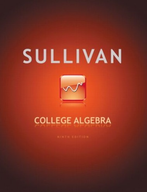Markov Chains A Markov chain (or process) is one in which future outcomes are determined
Chapter 0, Problem I(choose chapter or problem)
Markov Chains A Markov chain (or process) is one in which future outcomes are determined by a current state. Future outcomes are based on probabilities. The probability of moving to a certain state depends only on the state previously occupied and does not vary with time. An example of a Markov chain is the maximum education achieved by children based on the highest education attained by their parents, where the states are (1) earned college degree, (2) high school diploma only, (3) elementary school only. If is the probability of moving from state i to state j, the transition matrix is the matrix P = C p11 p12 p p1m o o o pm1 pm2 p pmm S m * m pij 634 CHAPTER 8 Systems of Equations and Inequalities The table represents the probabilities of the highest educational level of children based on the highest educational level of their parents. For example, the table shows that the probability is 40% that parents with a high-school
Unfortunately, we don't have that question answered yet. But you can get it answered in just 5 hours by Logging in or Becoming a subscriber.
Becoming a subscriber
Or look for another answer
